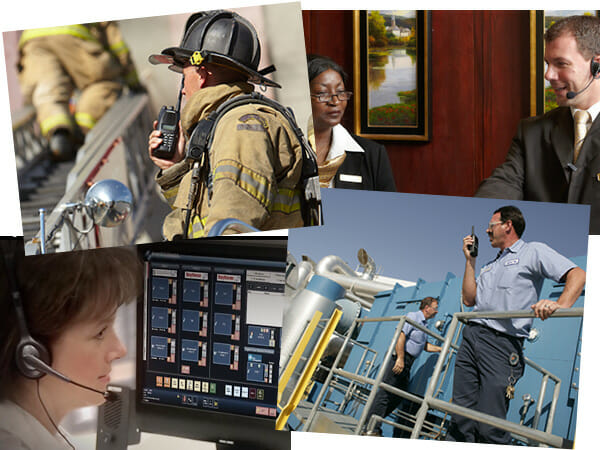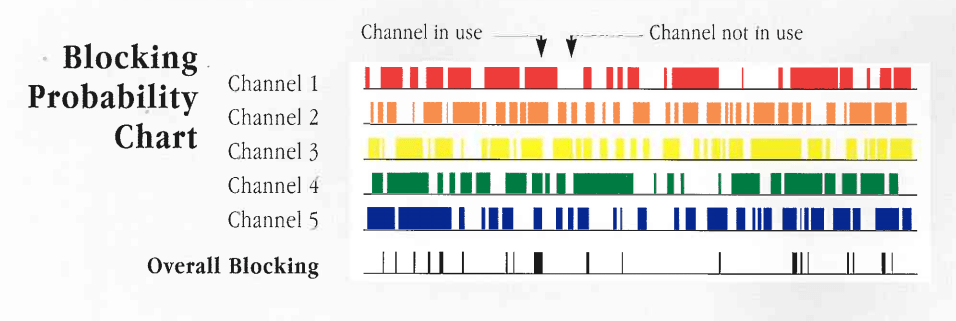Analog LTR Trunking Airtime Systems Colorado
 Analog –This is best suited for solutions that can obtain all required coverage from a single tower site or a few sites that are all in the radio coverage area of the business office, otherwise the office cannot reach the mobiles in the field. Any two radios that are attempting to communicate with each other must use the same tower site otherwise they will not be able to communicate. Also, the customer must not have any need for the enhanced features offered by digital technology such as text messaging, caller ID, email or high efficiency GPS. Many Two-Way Radio users require only a simple, reliable and low-cost method of communication which is provided by the analog systems. Standard analog radios usually offer push-to-talk, scanning, simple group conversations (one-to-many), and limited encryption capabilities.
Analog –This is best suited for solutions that can obtain all required coverage from a single tower site or a few sites that are all in the radio coverage area of the business office, otherwise the office cannot reach the mobiles in the field. Any two radios that are attempting to communicate with each other must use the same tower site otherwise they will not be able to communicate. Also, the customer must not have any need for the enhanced features offered by digital technology such as text messaging, caller ID, email or high efficiency GPS. Many Two-Way Radio users require only a simple, reliable and low-cost method of communication which is provided by the analog systems. Standard analog radios usually offer push-to-talk, scanning, simple group conversations (one-to-many), and limited encryption capabilities.
Trunked radios offer a considerable advantage over conventional radios. In a trunking system, there are several repeaters located at the same site that are all tied together into a centralized radio system. There is an automated system of assigning radio channels that keeps any two subscribers from being on the same channel at the same time, so that the radio user has the equivalent of having a private channel. This is equivalent to having a VPN with your computer system which provides you with the virtual private network so that you have the equivalent of a private and secure network while still sharing with other users.
The Blocking Probability Chart above represents traffic on a five-channel trunked system. The channels represented are approximately fifty percent loaded, meaning the channels are occupied by a radio signal 50% of the time. The colored area represents “in use” repeater time, i.e. when blocking would occur. If the channels were not trunked such that only one channel was available to a user, as in the case of a conventional radio repeater, the user would have only a fifty percent chance of obtaining the use of a channel at any arbitrary instant in time. However, if the user is permitted to select a free channel, the probability of being denied access or getting blocked at any instant is greatly reduced. Compare line six to any of the other five channels. Line six represents the time when there is no channel availability when looking at all five channels together rather than one channel at a time.
Our local affiliate
The MRA system is maintained by our affiliate Astral Communications in Lafayette, Colorado. They perform the routine maintenance at the tower sites as well as sell, install and maintain most of the radios on the network. If you have any issues with the system, need information about the system, wish to obtain airtime service, purchase radios, have equipment installed or removed or just want to talk to someone about what it can do for your communications requirements, contact:
Astral Communications
7800 Miller Dr. Unit D
Frederick, Co. 80504
303-449-7820 Voice
303-449-6417 FAX
FCC Compliance
Our analog trunked systems operate under the authority licensed to MRA by the Federal Communications Commission (FCC) for the use of the radio spectrum. All of our airtime customers that utilize our trunked repeaters operate under the authority granted to MRA by the FCC which negates the need for our subscribers to obtain an FCC license for operation on our analog trunking systems. Any radio operation by the subscriber that does not utilize our analog trunked systems does require an appropriate FCC license.
MRA ANALOG SITES
MRA has analog LTR trunking located at 5 key sites around the Front Range of Colorado. Each of these sites has been chosen to provide the best coverage available from key locations that are considered by most radio users to be the best of the best. The maps depicted below show the radio coverage for all radios in green and for mobile radios in blue. Mobile radios will always provide the best performance while portable radios will provide communications while away from a vehicle or inside of a building, but will always have less coverage than a mobile radio due to the factors discussed in the article “How Far Will My Radio Talk?” which is located elsewhere on the website.
DISCLAIMER: In the maps immediately following, the green area represents the areas where all radios will work. The blue areas require the use of a mobile radio to have usable radio coverage. The white areas of the map do not have any usable radio coverage. All of our maps tend to be a little conservative, so you should be able to obtain coverage that is equal to or better than what is predicted. However, since the maps do not take into consideration local man-made obstructions and trees, there may be some areas where the performance is below the predicted levels. A good rule of thumb is that the maps are about 90% accurate, but you cannot rely on absolute accuracy and we cannot guarantee coverage to be consistent with the performance indicated on the maps. If in doubt about the coverage, ASK FOR DEMO EQUIPMENT TO TRY OUT THE SYSTEM.
Click to view Rental ProgramsClick to view LTR Radio Products for Colorado
MRA TECHNICAL ANALOG RADIO COVERAGE
The following maps depict the MRA analog radio network coverage in greater detail than the maps above. There are eight main color levels of signal quality along with different shades of the various colors which shows gradual changes in signal strength. Each color (such as from red to yellow, yellow to green, green to turquoise, turquoise to blue etc.) represents a signal strength reduction of ten times weaker except the color change from magenta to red which represents one thousand times weaker signal. Mobile Radios will work well down to the dark blue areas, have some issues in the grey areas and not work at all in the white areas. Portable radios will work well down to the green areas and start experiencing some difficulty in the turquoise areas. Using a portable radio while inside a moving vehicle will have difficulty in the turquoise area and is typically not possible in the blue areas. To use a portable radio in the blue areas, one must exit the vehicle and find a “hot spot” and stay in the hot spot to communicate with the radio. Please see the discussion in the article “How Far Will My Radio Talk?” which is located elsewhere on the website.
DISCLAIMER: In the maps immediately following, the various colors represents areas of different performance. All radios will work extremely well in the magenta areas, very well in the red areas, work well in the yellow areas and work reasonably well in the green areas. The turquoise blue areas are a bit unreliable for portable radios and very unreliable in the blue areas, but mobile radios should work well. The gray area is marginal coverage for a mobile radio and the white areas of the map do not have any usable radio coverage. All our maps tend to be a little conservative, so you should be able to obtain coverage that is equal to or better than what is predicted. However, since the maps do not take into consideration local man-made obstructions and trees, there may be some areas where the performance is below the predicted levels. A good rule of thumb is that the maps are about 90% accurate, but you cannot rely on absolute accuracy and we cannot guarantee coverage to be consistent with the performance indicated on the maps. If in doubt about the coverage, ASK FOR DEMO EQUIPMENT TO TRY OUT THE SYSTEM

